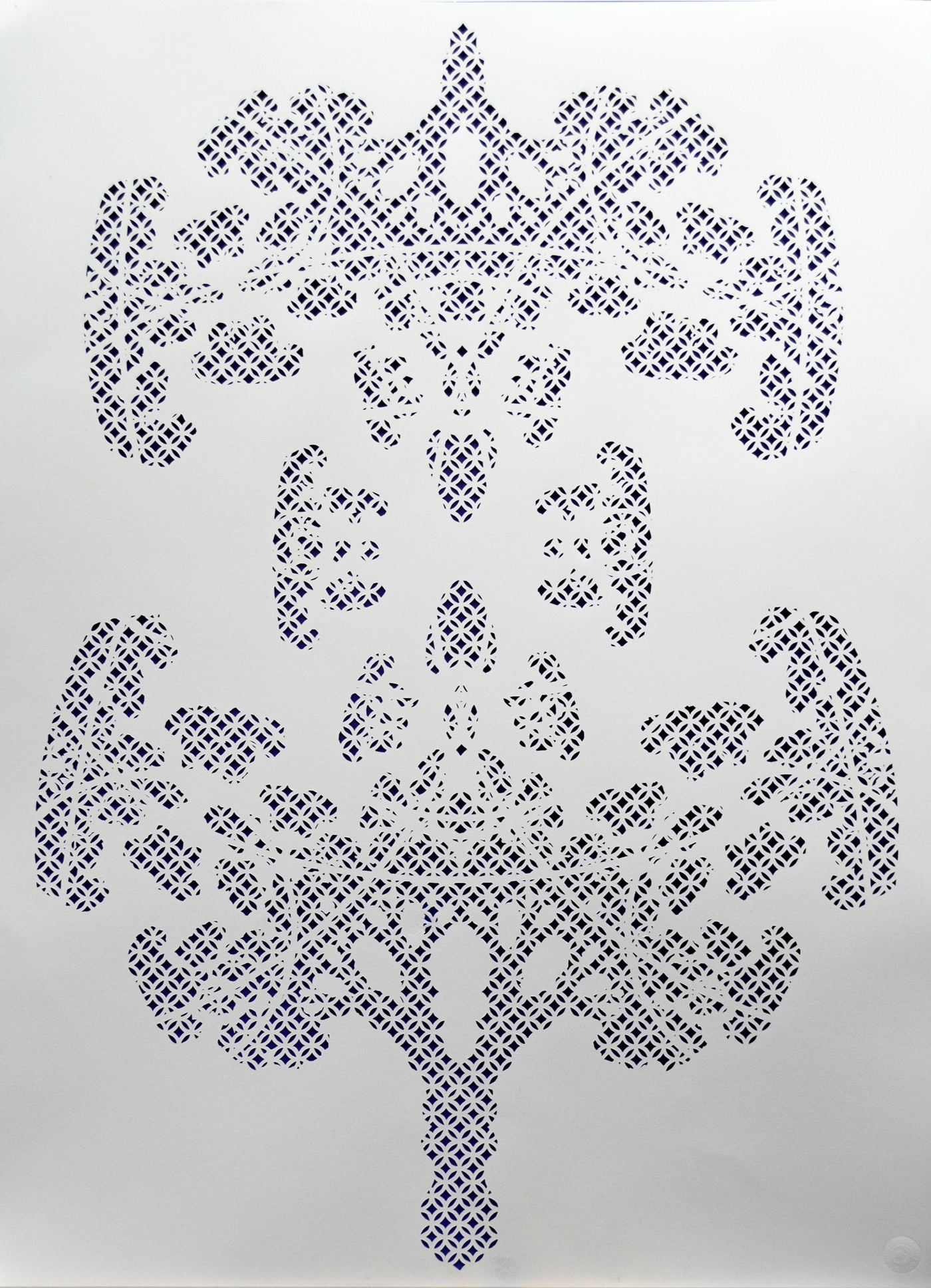Algorithmic Art
Within this body of work, I use mathematical algorithms—fractal geometry in particular—to create art that investigates convergences between science and spirituality.
Within the following, I use mathematical algorithms—fractal geometry in particular—to create art that investigates convergences between science and spirituality.
ARTIST STATEMENT
Similar to physicists who seek a unifying equation that elegantly explains the framework of the cosmos, I pursue unification by investigating areas of convergence between science and spirituality. Following an axiomatic approach,(1) I attempt to visualize the properties of god through an exploration of the physical laws and geometrical properties of nature.
The study of patterns plays an intrinsic role in human history. According to biologist and anthropologists, humanity evolved to recognize patterns as a means for survival. Today, through investigating the physical laws underpinning these patterns, we build an understanding of the universe in which we live. I am particularly interested in fractal geometry because it is the geometry used for modeling the architecture of natural objects.(2) Fractals, like an infinitely scalable blueprint, describe the natural formations large and small. It is within such mathematical patterns that I see the divine.
Through a visual analogy of fractal geometry, I use paper cut patterns derived from algorithms to create a portrait of the cosmos. The layered structure of this work echoes the axiomatic structure of algorithms, while its compositional augmentations draw inspiration from the strange loops of fugues.(3) The individual layers within this work are an allegorical exploration of the mechanics of the universe as inspired by insights from Newtonian and Quantum Physics. At the forefront, I use Newtonian fractals to reference the physics of the macrocosm—the laws governing the motion of objects within the world of our daily lives. As the layers move towards the back, the patterning becomes organic and seemingly random. I use those to reference the strangeness of the microcosm—where wave-particle dualities exist.
The seven layers in my work reference the Kabbalistic significance of the number seven and its connection to the natural world. The week contains seven days. Shabbat beings on the seventh day. Sukkot lasts seven days. There are seven states of physicality—six signifying dimension while the seventh is a unifying force that ties everything together. Through a combination of fractal geometry, physics, and spirituality, my artwork titled A Fugue in Fractal Strings represents my interpretation of mathematics and god as a unified whole.
1. According to Lynn Gamwell’s Mathematics + Art: A Cultural History, the axiomatic method consists of a three-part system: axiom or postulate (theme), rules of logical deduction (that which governs the augmentation of the theme), and theorem (the composition as a whole).
2. The term “fractal” was coined by Benoit B. Mandelbrot, in The Fractal Geometry of Nature, to describe the fractured, irregular, and amorphous geometry of natural patterns. A key component of fractal geometry is self-similarity at multiple scales. Fractals are non-Euclidian and generated by algorithm.
3. Strange loops, conceptualized by Douglass Hofstadter in Gödel, Escher, Bach: An Eternal Golden Braid, describe the self-referencing, paradoxical, and recursive hierarchical systems found within mathematics, art, and music. In music, the fugue structure resembles the axiomatic method.

A Fugue in Fractal Strings
Seven layers of machine- and hand-cut paper, 11" x 22" each, 2016

Axiom (via Newtonian Methods)
Three layers of machine- and hand-cut paper, 24" x 12" 2016

Fractal Eddy
Hand-cut paper, 14" x 14", 2015

Tree of Life
Hand-cut paper, 22" x 30", 2015

Life-force: Sky and Sea (via Julia Set)
Reductive linoleum print, 24" x 18", 2015

The Expansion and Contraction of the Universe (via Trema / Distribution of Mass)
Pen and ink on paper, 22" x 30", 2015

Fractal Forest
Laser print transfer on burnt wood, 30" x 18", 2015